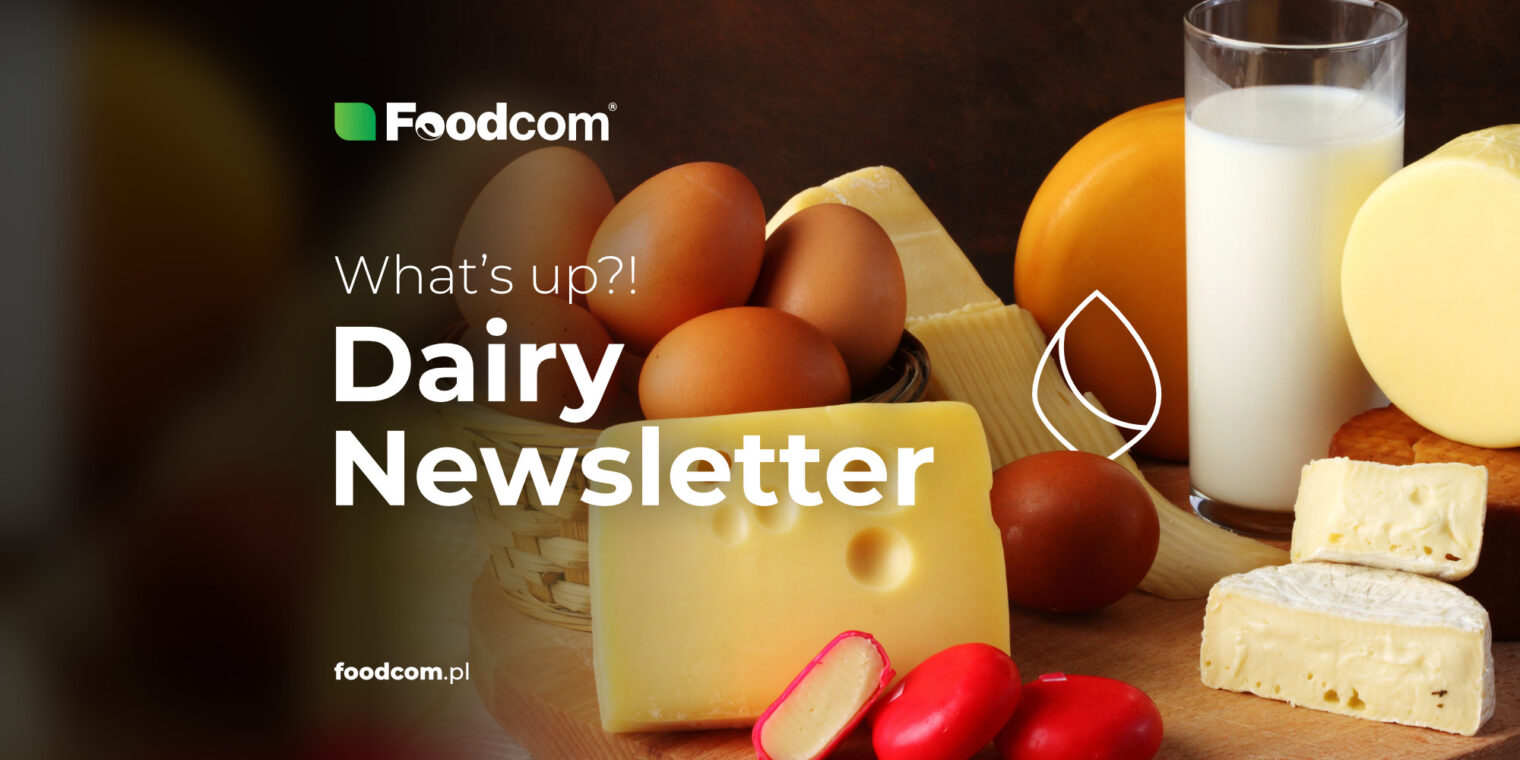- Skimmed milk powder prices are rising, fueled by increased interest from China, which could be a sign of change in the market.
- There are mixed price trends in the cheese market, with the price stability of Gouda standing out in contrast to the decline in Cheddar.
- Germany is expecting a rise in retail butter prices, reflecting the general volatility of fats in the market.
- Farmer protests in Brussels against low prices and free trade agreements lead to a review of EU policy, with a focus on improving conditions for farmers.
Hello Partners!
Welcome back to our Newsletter!
In our latest newsletter, we discuss the dynamic changes in the dairy market, focusing on the rise in Skimmed Milk Powder prices and the fluctuations in Cheese and Butter prices. We highlight key trends that could influence industry decisions, including China’s increasing interest in SMP and global export challenges. Read on for detailed analysis and information to help you navigate the changing dairy market.
Let’s take a look at what else is happening in the dairy market!
Products of the Week
Skimmed Milk Powder
Prices for SMP are rising, with transactions above the 2600 EUR/MT FCA mark for customized products. China’s interest in the SMP segment is exceeding expectations, indicating a potential market shift in Q2. Despite mixed signals at the Gulfood trade fair in Dubai, the situation remains dynamic, with potential transportation issues affecting export demand from the EU. In addition, there is notable activity in the feed sector, with interest in feed prices for the second quarter reaching 2,50 EUR/kg DAP.
Cheese
There are mixed price trends on the cheese market. Gouda is still at 3950 EUR/MT or higher, while mozzarella is reaching a level of 3600 to 3700 EUR/MT. Cheddar has seen a significant drop of around 5%, with prices ranging between 4000 and 4100 EUR/MT. In addition, demand for Cagliata is increasing, with prices ranging from 3900 – 4000 EUR/MT.
Fats
Butter prices have been very volatile, rising to levels of up to 6200 EUR/MT before subsequently falling to around 5900 EUR/MT, while Polish Butter today is trading at 5650 and 5750 EUR/MT. In Germany, retail butter prices are expected to rise and are likely to hover around 6 EUR in March.
Liquids
Cream prices initially rose to 6800 EUR/MT, then we saw a drop to below 6700 EUR/MT. Currently, the price for cream is at 6400 EUR/MT. At the same time, availability on the market has increased significantly, which could attract buyers looking for cheaper options.
Prices for Skimmed Milk Concetrate have fallen below the 2000 EUR/MT mark and are now at 1900 EUR/MT FCA Germany. This significant price drop signals ample availability on the market. For potential buyers, now could be a good time to take advantage of the lower prices.
While Milk production is increasing in the EU, it remains below last year’s level in certain regions such as Ireland. However, due to lower feed costs and satisfactory water reserves in many countries, it is expected that milk production in the EU could exceed last year’s figures. Additionally, there is an anticipation of a milk flash due to unexpectedly high temperatures for this time of year.
Whey powder
On the Sweet Whey Powder market, prices for February/March deliveries are at 730 EUR/MT and are set at 760 EUR/MT for the second quarter. The market remains quiet, with limited activity, especially from end consumers. In contrast, prices for Sweet Whey Concentrate remain stable at 500 EUR/MT FCA.
What else?
The release of the 2023 data sheds light on the outlook for US dairy exports in 2024, which is characterized by uncertain economic growth in China and a potential slowdown in demand in Mexico. Global dairy trade will depend on economic recovery, despite challenges such as conflict and trade restrictions. Competition from Europe and New Zealand and the limited expansion of the US dairy sector due to high costs will impact export opportunities.
The AFBF and NFU urge the USDA to stabilize milk prices by returning to the previous Class I formula, which took into account the higher of the two Class III or IV prices. The current formula, which takes both averages into account, has caused over $1 billion in losses since May 2019. With dairy farms down 34% since 2017, they emphasize the urgency. However, the slow process of revising federal milk marketing orders is prolonging farmers’ plight.
In Brussels, farmers protested against low supermarket prices and free trade agreements, setting tires on fire and blockading the city with 900 tractors. At the same time, protests against cheap imports and strict environmental regulations took place across Europe. In response to the demonstrations, the EU relaxed some provisions of the Green Deal and placed greater emphasis on farmers’ incomes, including minimum support prices and import restrictions.







